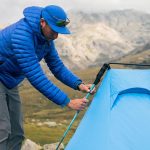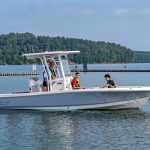Baylor University, in collaboration with the U.S Forest Service (USFS) Rocky Mountain Research Station, has developed a model that predicts the risk of wetland habitat loss based on local wetland features and characteristics of the landscape surrounding the wetland.
The new model was used to predict the fate of wetland habitats over a 13-state area in the southern United States and was published in the journal Ecological Applications.
“Because conservation resources are scarce, it is essential to focus conservation efforts on those geographic areas where the risks for further wetland habitat loss are the greatest,” said Dr. Kevin Gutzwiller, professor of biology at Baylor who co-authored the study with the USFS. “Our predictive model can be used to plan protection efforts by helping to prioritize wetland areas for conservation. The model also can be used to assess the effectiveness of current wetland conservation programs.”
Wetlands are crucial habitats for many plants and animals, yet many are converted for other human land uses. In fact, according to government figures, between 1992 and 1997, more than 500,000 acres of wetlands were lost in the United States. Seventy-five percent of those losses were attributed to development or agriculture. The greatest loss during this period occurred in the southern United States, with development as the main reason for wetland habitat loss.
The researchers focused their study on the southern United States since in that region urbanization and housing development increased at a greater rate than in any other region in the country from the early 1980s to the late 1990s. Moreover, the southern United States also has nearly half the nonfederal wetlands occurring in the contiguous United States, and is the region where the majority of wetland acreage was converted during the 1990s.
The study authors used data obtained from the National Resources Inventory and from the National Land Cover Data from 1992 to 1997. They randomly selected 70 percent of the more than 40,000 observation points to build the model and randomly divided the remaining 30 percent of the data into five separate test data sets.
The study found:
The variables that best predicted wetland habitat loss were:
- Land-cover and land-use of the surrounding landscape
- Size and proximity of patches of development within 1,900 feet of the wetland
- Road density within 1,900 feet of the wetland
- Land ownership
- The percent of the landscape within 1,900 feet of the wetland that was covered by woody and herbaceous wetland.
The study found that they results imply that the risk of wetland habitat loss was most strongly associated with conditions at or within 1,900 feet of a wetland site
For the five test data sets, the statistics indicated the researchers model had substantial predictive ability across the study region.
The model predicted that the risk of wetland habitat loss was greater in and near highlands, such as the Appalachian Mountains, and the Boston and the Ouachita Mountains in Arkansas and Oklahoma. The risk of wetland habitat loss was typically lower in much of the lowlands, such as the Coastal Plain and the Mississippi Basin.
Throughout the study area, higher predicted risks of wetland habitat loss occurred in and near large urban areas.
“Wetland fate is thought to be influenced by both local and landscape-level processes, and for this reason, we defined two sets of predictors: local predictors that were derived directly from the National Resources Inventory; and landscape predictors derived from the 1992 National Land Cover Data that characterized land-use and land-cover in the vicinity of wetland points,” said Dr. Curtis Flather, study co-author and research wildlife biologist with the USFS Rocky Mountain Research Station.
“Because of their topographic and edaphic characteristics, highlands are likely to be better drained than are lowlands. Wetlands situated in highlands may therefore be less extensive and more isolated than wetlands situated in lowlands. Although the Coastal Plain and Piedmont regions were characterized as having generally lower risks of wetland conversion relative to the highlands, there are notable areas of high risk interspersed throughout these regions,” Flather said.
The study was funded by research joint venture agreements between the USFS, Rocky Mountain Research Station and Baylor University.












